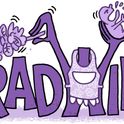Several hundred members of the all-male Garrick Club recently crowded into a conference room in central London to vote in favour of admitting women. Nearly 200 years after the Garrick was founded for “actors and men of refinement and education”, the club has decided that women might not be as “unclubbable” as originally thought.
If the language of clubs is anything to go by, these elite institutions have always been more about exclusion than inclusion. The word unclubbable, a derogatory label for those considered too unsociable for membership, was coined in 1764. It took several decades for its opposite, clubbable, to appear. The expression blackballing was coined at the same time as unclubbable, after a voting system in which club members decide whether to admit someone new by casting white or black marbles as ballots. In the final count often the presence of just one or two black marbles, which signal dissent, is enough to reject a candidate. The expression whiteballing never took off because, in clubland, rejection was more comment-worthy than acceptance.
Club names alone are cause for linguistic intrigue. Some of the oldest and most exclusive clubs, still all-male, were named after men: Garrick (1831), in honour of the actor David Garrick; Boodle’s (1762) from its head waiter, Edward Boodle; and White’s, which started as a chocolate house, got its name in 1693 from its founder, Francesco Bianco, an Italian chef who anglicised his name to Francis White. Then there is the pompously named The Club (1764), which famously excluded Winston Churchill, prompting him to start his own in 1911, called The Other Club. Not to forget those names that win on sheer quirk: the Wednesday Club (from which the Bank of England was started) which met on Friday Street in London during the reign of William III; and Nobody’s Friends (1800), founded for Anglican clergy of the High Church tradition, which still exists, now with female members. Others were named with high hopes, but alas failed: The Everlasting Club of the late seventeenth century wanted to last forever and for its one hundred members never to want for company, so they took turns sitting at a table every hour of every day for several generations.
The 19th century was a period when clubs proliferated, especially on Pall Mall and the area between Trafalgar Square and St James’s Palace which became known as Clubland (1885). Someone who spent too much time in a club was called a clubmonger (1837); a member of a club was a clubman (1853); and the term clubocracy (1882) was modelled on “aristocracy” to refer to the class who are members of clubs. There was a specific language within clubs, too: the dining room was known as the coffee room (a fossilization of the fact that clubs emerged from London coffee houses in the mid-late 17th century); a stranger was a guest; and club table was the long table in the coffee room at which solo members could join others for dining and conversation, as in Oxbridge colleges.














